Starfleet Command Volume II Updated Preview
We revisit Interplay's upcoming Star Trek tactical game and uncover new details.
When Starfleet Command was released last year, its faithful reproduction of tactical capital starship battles excited the imaginations of both Star Trek fans and strategy game players looking for a more detailed re-creation of space combat. But even though its tactical multiplayer game and single-player skirmishes - which let you replay famous Star Trek battles like the face-off between Kirk and Khan in the second Star Trek movie - were very popular, there was little to hold each battle together. The upcoming sequel aims to fill this gap. The new metaverse campaign in Starfleet Command Volume II has been designed from the ground up to weave the game's hallmark tactical combat into an overlying strategic layer for solo players as well as in a persistent multiplayer setting. We've had the chance to play with the game's metaverse to get a better sense of how the new campaign system will work.
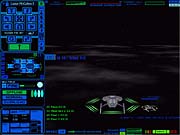
The single-player metaverse campaign brings most elements of the online game into a less competitive, story-based environment. The Starfleet Command games take place in an alternate Star Trek history, which differs from the one presented in the original TV series in ways that have let the designers introduce more compelling political threats and a wider array of starships for each race. The new game's storyline revolves around two new races, the ISC and the Mirak, each situated on opposite ends of the charted galaxy. The game's two campaigns contain about 60 branching story-based missions in addition to 24 encounters that are focused on grabbing and defending territory. One campaign challenges you - as captain for one of the six established powers - to contain the threat of the ISC, a militaristic race that has decided to pacify the galaxy. The other campaign lets you side with the Mirak, a savage feline race with powerful missile-based ships. Those who preorder the game will receive a bonus of four extra missions on a CD that features the voice of George Takei, who played Sulu in the original series. Captain Sulu leads the tutorial missions.
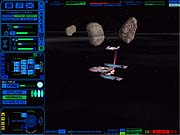
Apart from its story elements, the metaverse is designed to take a larger, geopolitical view of warfare in the Star Trek universe. This aspect of the game emphasizes larger scale strategy, so you will undertake some missions simply to alter the balance of power, as raids and patrols now have a distinct effect on which empire owns a given sector. From the simple hex-based map of the metaverse, you can venture into both friendly and enemy sectors and choose from a variety of offensive, defensive, or diplomatic missions on each occasion. Sectors now have an influence rating - a statistic rather like hit points - which indicates how solidly a side controls a given territory. The metaverse also represents the economic impact of sectors changing hands, which on the most practical level will affect the cost and availability of starships. On the galactic map, each sector indicates how important it is economically - those with planets and starbases tend to be worth more - and how quickly ships may move through it. Movement rates will vary, depending on whether a sector is in safe interior space or in a disputed border zone.
Although the metaverse clearly promises a more involving and strategic single-player experience than the first game's campaign system, some elements have been designed with the multiplayer game in mind. Don't expect campaigns to be deep Risk-like exercises in conquering the galaxy. Unlike the strategic layer to Shogun: Total War, the metaverse doesn't let you manage empire resources, engage in espionage or imperial diplomacy, or gather more than three starships to command at a single time. The player is clearly designated as the captain of a small strike force, and these grander issues just aren't a captain's concern. On a basic level, the metaverse primarily complements what Starfleet Command has done best: tactical ship combat. In the persistent multiplayer universe, the metaverse brings up some very interesting possibilities.
Multiplayer Battles
Starfleet Command has proven to be surprisingly popular as a multiplayer game. Taldren, the game's developer, has stayed in close contact with the community that arose around the tactical-only multiplayer provided by Mplayer and has been tweaking and balancing this part of the game over the last year. The multiplayer metaverse in Starfleet Command Volume II will provide a more cohesive setting for these battles, and Taldren hopes that players will take advantage of the political setting to create online personas. When the game launches, hundreds of players will be able to play simultaneously in a persistent online environment. Vying for political supremacy will be the key goal in the multiplayer metaverse, and it's likely that the galaxy will be rife with large-scale conflict. It will be tough to capture sectors from other empires, so players in a given empire will have to band together for coordinated attacks. Though many games now offer stats tracking for multiplayer rankings and though player communities often form teams for organized events, no retail strategy game has given gamers the chance to cooperate on such a scale within the game.
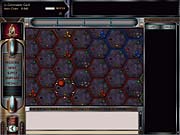
In the course of the multiplayer campaign, players will have the choice of 24 missions types, which each have different effects on the current sector. On the most detailed sector map, you can see the players within sensor range, and the computer will draw opposing players into the mission you've selected. A player can, of course, choose to disengage from combat, but only with a significant loss of the prestige points used to buy ships and supplies. This system will make conflict common, yet a wider range of smaller and cheaper vessels has been added to easily let defeated captains rejoin the war effort.
In the multiplayer game, both ship purchasing and movement work quite differently to increase player interaction. Empire's varying economic fates will be of great importance in the online world, as this determines the rate new ships become available for purchase. And as befits this age of e-commerce, players must bid for these new ships eBay-style, which can drastically affect the price when war makes materials scarce. The more powerful ship types will be correspondingly more rare, so players will have to work hard to get these - and keep them in one piece. Movement in the online galaxy can take quite a bit of time, from one to several minutes per sector depending on its movement rate. Fleets of players will have to work closely to time raids and subsequent runs back to friendly starbases for supplies.
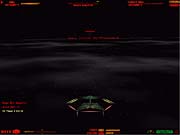
In the game's infrastructure, Taldren has taken a page from online role-playing games in its design of the multiplayer metaverse. A full chat system will be available in the metaverse. Players will be able to page anyone in the game or talk directly to those in nearby sectors. The game will also allow progressive upgrades after release so that new missions, interfaces, and features can be made available to everyone playing online. The metaverse itself will be hosted by WON.net, which is now a part of Flipside.com and is more open to providing technology to those outside of Sierra, its parent company. Taldren has designed the game's networking to be fully scalable and flexible so that multiple metaverses may coexist on one server; or a single metaverse may span several machines. As in most real-time strategy games, the tactical battles use peer-to-peer networking to reduce server load and game latency. Support for the current type of tactical game will continue on Mplayer, and both games will soon support Global Ranking's stats tracking. Read on for a look at additions to the tactical game.
Manipulating the Action
On the tactical side of things, Starfleet Command Volume II makes a couple of small enhancements to the interface and the 3D engine and also adds new ships and weapon systems. Players of the previous game will notice that tactical encounters now take place at a slower pace. Since the metaverse will greatly increase the stake that each player has in the outcome of a given battle, the developer decided to slow the game mechanics down by more than a third. This should allow players to consider their actions more carefully and prevent frustrating mistakes due to misplaced clicks. A few functional changes have been made to the game interface - especially in the method that you control multiple ships. The new fleet interface now provides a variety of formation options, as well as detailed settings that determine how the AI-controlled ships will act. Another small tweak makes the energy control panel more flexible, as you can now set priorities for each system so that engines won't always soak up energy first.
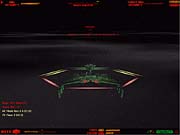
The most dramatic polish comes in the game's new voice work and 3D eye candy. The first game was criticized by some for giving too little audio feedback. In comparison to combat scenes in the Star Trek movies - where officers shout status reports and captains bark decisive orders - you mainly use visual status screens to get info in Starfleet Command. However, for the sequel, Taldren has worked to include audio confirmation for nearly all the major shipboard activities. Commands have been divided up into four voice groups - the first officer, general officer, fighter voice, and marine voice - that have been assigned to different actors for each of the game's eight races. For each command, multiple takes and phrasings have been used to avoid numbing repetition. There have also been a few noticeable changes to the game's 3D engine. Ships now have a much more detailed lighting model, as luminosity mapping shows running lights and other details very clearly when ships pass into shadow, as when they pass behind a planet. Damage is now more realistically depicted, with ship hulls showing increasing structural damage, venting gases, and electrical arcs. As a ferocious battle progresses, the new damage animations and the debris littering space give a sense of the epic nature of capital ship combat.
As might be expected, Starfleet Command II brings a variety of new weapons and ships. Again, to balance the various sides for the metaverse game, more races now have carrier, missile, and support ships. In the first game, only the Hydrans had fighter capabilities; however, in Starfleet Command II, most of the races have large carrier starships to support swift fighters. In addition, carriers can now carry larger "pseudofighters," which are controlled individually instead of in squadrons of four. Many new smaller ship designs have been implemented to round out the lower side of the scale, and the metaverse economy will make the destroyers and frigates much more common. The ISC also introduces a new weapon, the plasmatic pulsar device (PPD), which is a long-range heavy plasma weapon. Another difference is the wider use of missile weapons - even by the Federation - and of antimissile defense (AMD) countermeasures. AMD systems are standard on some smaller ships and support vessels, which will help defend the larger capital ships and carriers from these powerful attacks.
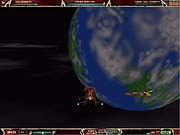
On the whole, the promise of uniting the quality tactical play of Starfleet Command with a persistent universe is enticing - even though the metaverse is still rough around the edges. The version we played includes only basic interface elements, and the star map itself is drawn in a rather flat and static way. It is in this hex map rendition of the known galaxy that the game's Starfleet Battles heritage shines through most clearly. Yet, this may not impact the online experience, as social interaction can sometimes replace the immersiveness of great graphics. The metaverse element may help Starfleet Command II expand on the fan base of its predecessor, but it will surely help draw fans into long sessions online. Something as purely addictive as EverQuest could invigorate strategy games as much as online RPGs have for that genre.
Got a news tip or want to contact us directly? Email news@gamespot.com
Join the conversation